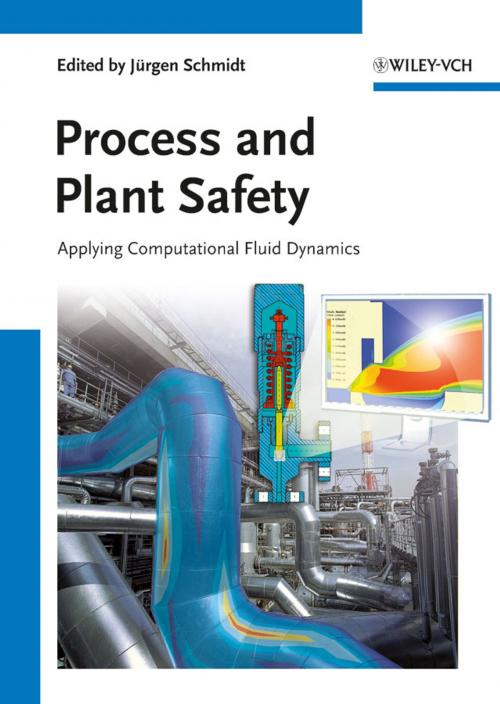Process and Plant Safety
Applying Computational Fluid Dynamics
Nonfiction, Science & Nature, Technology, Industrial Health & Safety| Author: | ISBN: | 9783527645732 | |
| Publisher: | Wiley | Publication: | September 13, 2012 |
| Imprint: | Wiley-VCH | Language: | English |
| Author: | |
| ISBN: | 9783527645732 |
| Publisher: | Wiley |
| Publication: | September 13, 2012 |
| Imprint: | Wiley-VCH |
| Language: | English |
The safe operation of plants is of paramount importance in the chemical, petrochemical and pharmaceutical industries. Best practice in process and plant safety allows both the prevention of hazards and the mitigation of consequences. Safety Technology is continuously advancing to new levels and Computational Fluid Dynamics (CFD) is already successfully established as a tool to ensure the safe operation of industrial plants.
With CFD tools, a great amount of knowledge can be gained as both the necessary safety measures and the economic operation of plants can be simultaneously determined. Young academics, safety experts and safety managers in all parts of the industry will henceforth be forced to responsibly judge these new results from a safety perspective. This is the main challenge for the future of safety technology.
This book serves as a guide to elaborating and determining the principles, assumptions, strengths, limitations and application areas of utilizing CFD in process and plant safety, and safety management. The book offers recommendations relating to guidelines, procedures, frameworks and technology for creating a higher level of safety for chemical and petrochemical plants. It includes modeling aids and concrete examples of industrial safety measures for hazard prevention.
The safe operation of plants is of paramount importance in the chemical, petrochemical and pharmaceutical industries. Best practice in process and plant safety allows both the prevention of hazards and the mitigation of consequences. Safety Technology is continuously advancing to new levels and Computational Fluid Dynamics (CFD) is already successfully established as a tool to ensure the safe operation of industrial plants.
With CFD tools, a great amount of knowledge can be gained as both the necessary safety measures and the economic operation of plants can be simultaneously determined. Young academics, safety experts and safety managers in all parts of the industry will henceforth be forced to responsibly judge these new results from a safety perspective. This is the main challenge for the future of safety technology.
This book serves as a guide to elaborating and determining the principles, assumptions, strengths, limitations and application areas of utilizing CFD in process and plant safety, and safety management. The book offers recommendations relating to guidelines, procedures, frameworks and technology for creating a higher level of safety for chemical and petrochemical plants. It includes modeling aids and concrete examples of industrial safety measures for hazard prevention.















